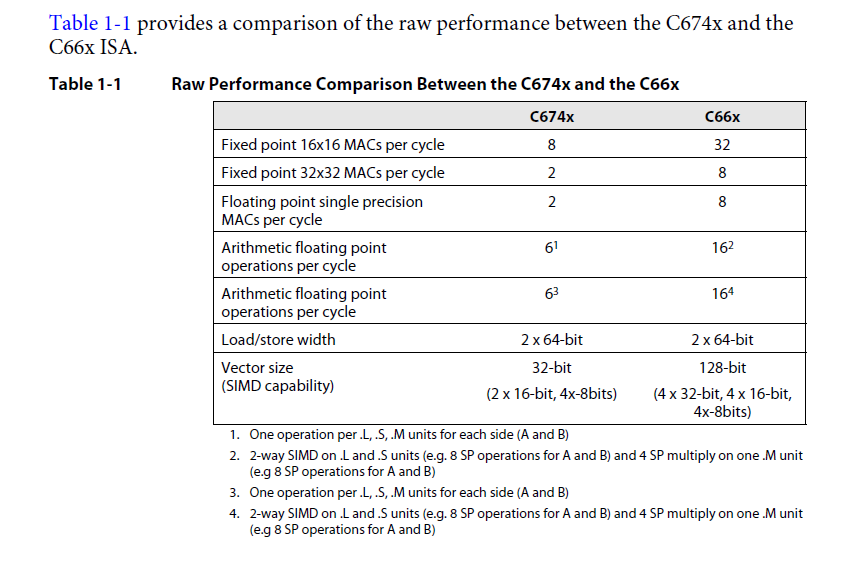Hello TI Keystone Expert,
I have got some questions from our customer about the C66x core and interface of Keystone1 devices. It would be helpful if you could check the following questions and give any comment.
1. It is written in the C66x datasheet that the complex number multiplication could be supported by a hardware. If a pair of complex number (real 32bit + imaginary 32 bit) is multiplied by C66x core itself, how many cycles are needed in one complex multiplication?
2. Regarding the benchmark in TI website; http://www.ti.com/lsds/ti/processors/technology/benchmarks/core-benchmarks.page . It is written that All benchmarks measured with data located in L2 SRAM. In same condition, if the complex multiplication (in case of #1 above) is done for 1024 times, how many cycles are needed? They want to know whether the number of cycles are just 1024 times of the result of #1 or the cycle count is increased due to data load or decreased thanks to the parallel processing.
3. If the data cannot be hit to the L2 Cache, how much penalty should we anticipate? In the case of #2 above, the complex number of multiplication and multiplicand, if all of 1024x2x2=4096 words = 16384 bytes data is L2 cache missed, how long (usec) does it take to read from DDR to DSP core through internal bus? Please give any comment in the case of AM5726(750MHz DSP) and DD3-1066.
4. Same as #1, if a pair of complex number (real 32bit + imaginary 32 bit) is "added" by C66x core itself, how many cycles are needed in one addition computation? Also, if this operation (a pair of complex number is added) is repeated for 1024 times (it is not 1024 cumulative adding), how many cycles are needed in the condition that all data is located in L2 Cache?
5.How many channels could be supported to transfer 24bit x 48kHz by McBSP? In the case of 32-bit data, is it up to 8 channels?
6. C667x series does not have a McBSP but has a TSIP interface. Is it possible to output of audio data (24bit x 16ch x 48Hz) from TSIP and convert to multiple I2S of TDM by external FPGA? Also, is the Verilog IP of TSIP interface prepared to the customer?
Best Regards,
Nobu Arai


